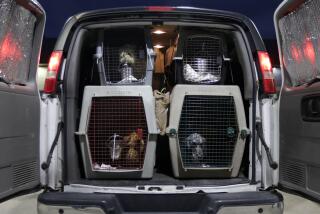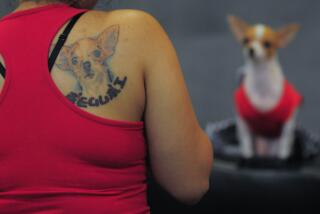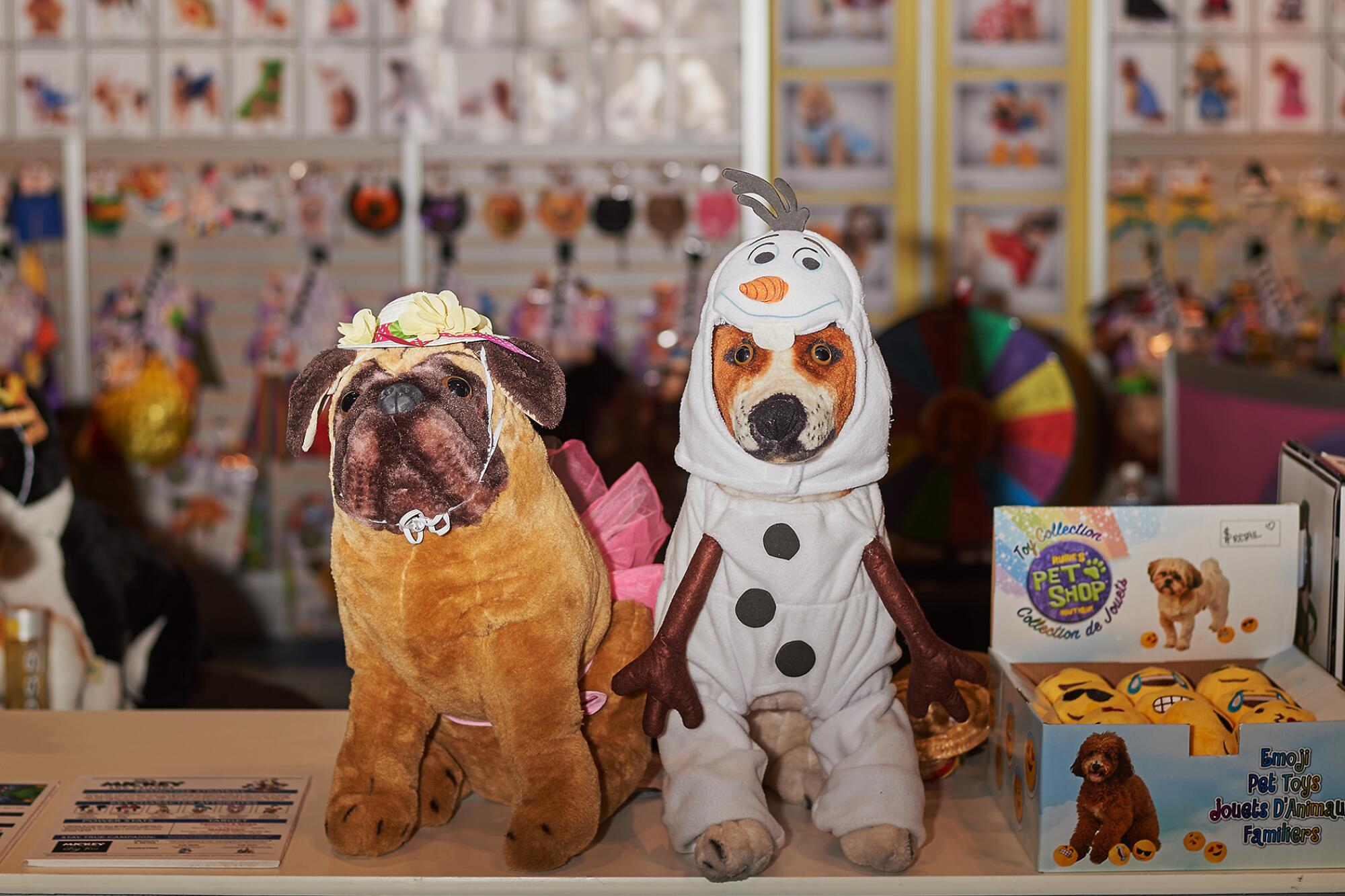
ORLANDO, Fla. — Blame it on the ex-girlfriend.
For the record:
11:37 a.m. April 9, 2020A photo caption with a previous version of this article said that pet treats in a display case came from Blue Buffalo. They are sold by Tyson.
Alan Cook’s curious crusade against pet poop drew its first breath in December 2001, when his then-sweetheart fell ill and roped him into cleaning her cat’s litter box. Gasping for air, Cook had a business epiphany.
A mechanical engineer and startup veteran, he began researching the market, sketching prototypes and corralling investors.
Four years of trial and error later, Cook unveiled ScoopFree, a self-cleaning litter box. After adding a line of laser cat toys and selling the company to a pet industry behemoth in 2012, the Chicago native turned his attention to dogs.
The result: a Wi-Fi enabled contraption that not only wraps and seals canine waste automatically, but first snaps a photo of the mess, analyzes it for potential health problems, and then texts the picture to the dog’s owner. A “photo journal” is maintained for veterinarian review.
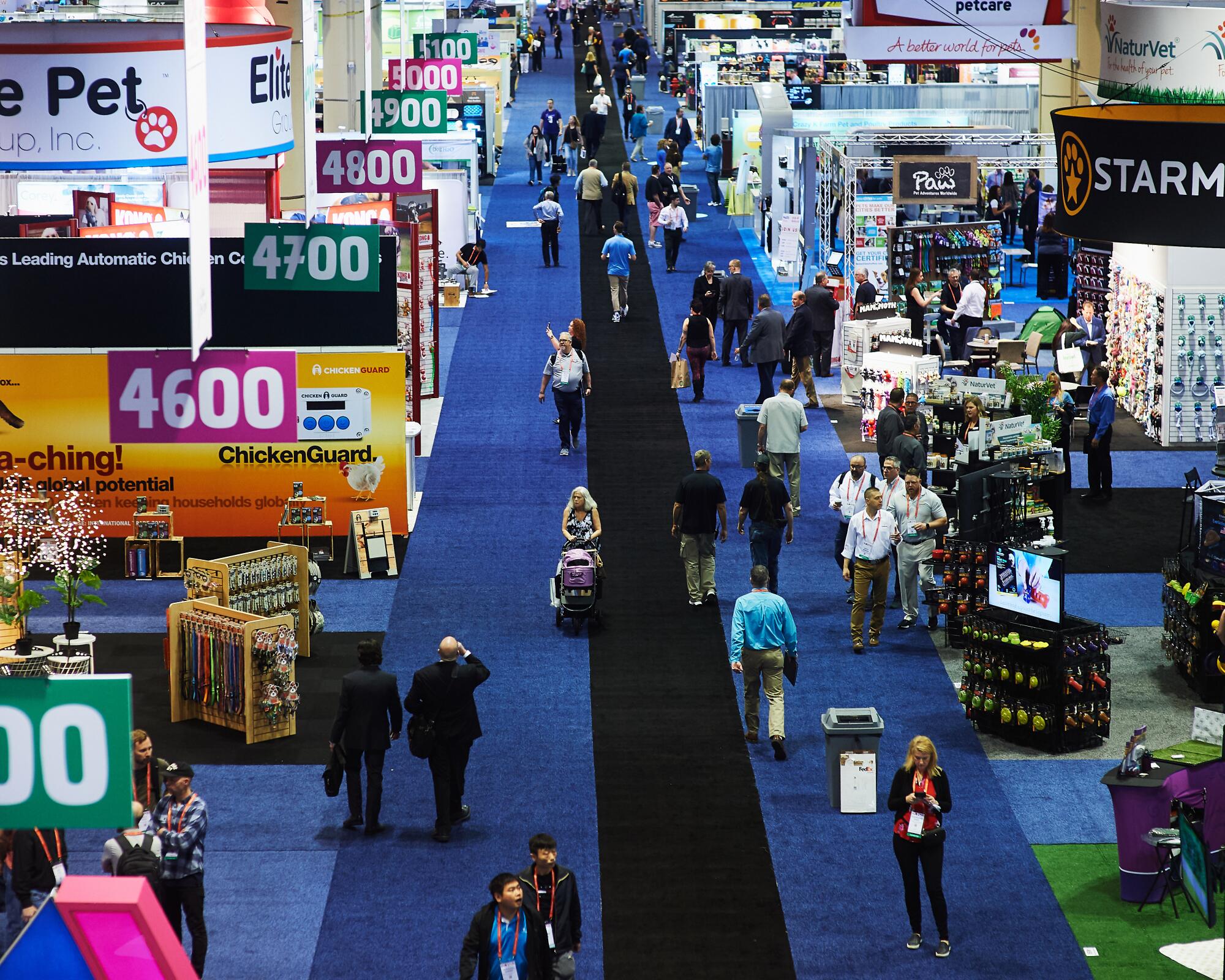
Called BrilliantPad Smart, the indoor potty debuted earlier this year at Global Pet Expo, a three-day trade show here in Orlando, Fla. The annual extravaganza, which occupied 17 football fields of convention space, also premiered a $2,000 canopy bed for canines, piñatas for parrots, and a GoPro-style camera for cats.
Last year, Americans spent $95 billion on pet products and services, up from $60 billion a decade earlier, according to Packaged Facts, a consumer research firm based in Chicago. Experts attribute the boom to a growing phenomenon of anthropomorphizing animals.
Hoping to strike it rich, hundreds of mom-and-pop inventors, celebrities and big-name corporations invaded this city’s cavernous convention center to showcase the latest in creature comforts for pets — from canine pianos to subliminal sound gizmos that soothe nervous falcons. Dogs were jumping rope and wearing costumes, kittens tangled with toys in a cat playground, a blue parrot squawked in the background. Some vendors arrived with their own pets; a few of them passed out treats. The novel coronavirus had yet to sideline large gatherings.
As lemon-lime pythons slithered inside a mist-filled terrarium, wholesale buyers from 78 nations searched for the next smash hit.
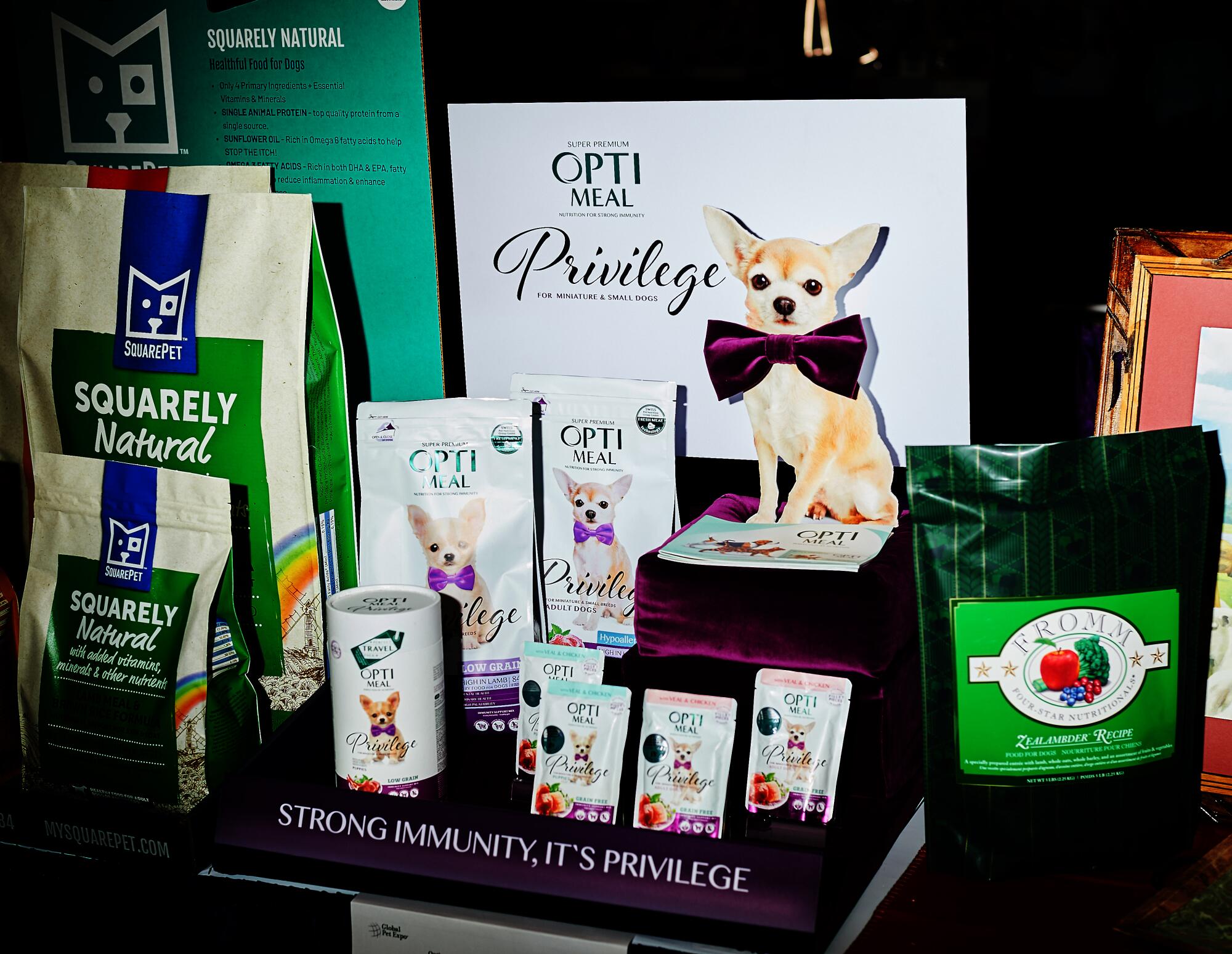
“The most compelling products are born from personal experience or annoying problems,” Cook said.
At the Global Pet Expo, however, the genesis of most products seemed to be converting human merchandise and fads into animal equivalents:
· Tartar-control toothpaste? Anti-plaque chew toys.
· Medical marijuana? CBD-infused treats and supplements, one of the industry’s hottest categories. (Even Martha Stewart has plans to release a line of hemp-laced hound supplies.)
· Fitbit? FitBark.
· Stone-washed jeans? Distressed denim for the fashion-conscious Fido.
· Baby Einstein? My Intelligent Pets, which makes Sudoku puzzles, pianos and other hidden-treat brain games to “unleash a genius within your pet.”
The pet food aisle is about to grow with dog food made from crickets, Serrano bone treats and cat food designed to curtail allergens.
In that spirit, a growing number of human brands have launched pet divisions. La-Z-Boy now sells miniature sofas for dogs. GNC peddles pet multivitamins. Laura Ashley makes designer cat tunnels. And Serta offers an online “pet bed selector” that uses canine size and sleeping posture (curled up vs. sprawled out) to determine the ideal mutt mattress.
Although corporate crossovers aren’t novel — the Mars candy company branched into pet food nearly a century ago — they’ve grown so common that a sub-industry has sprung up to develop and manufacture licensed animal products for the likes of Burt’s Bees, Glad and Peeps.
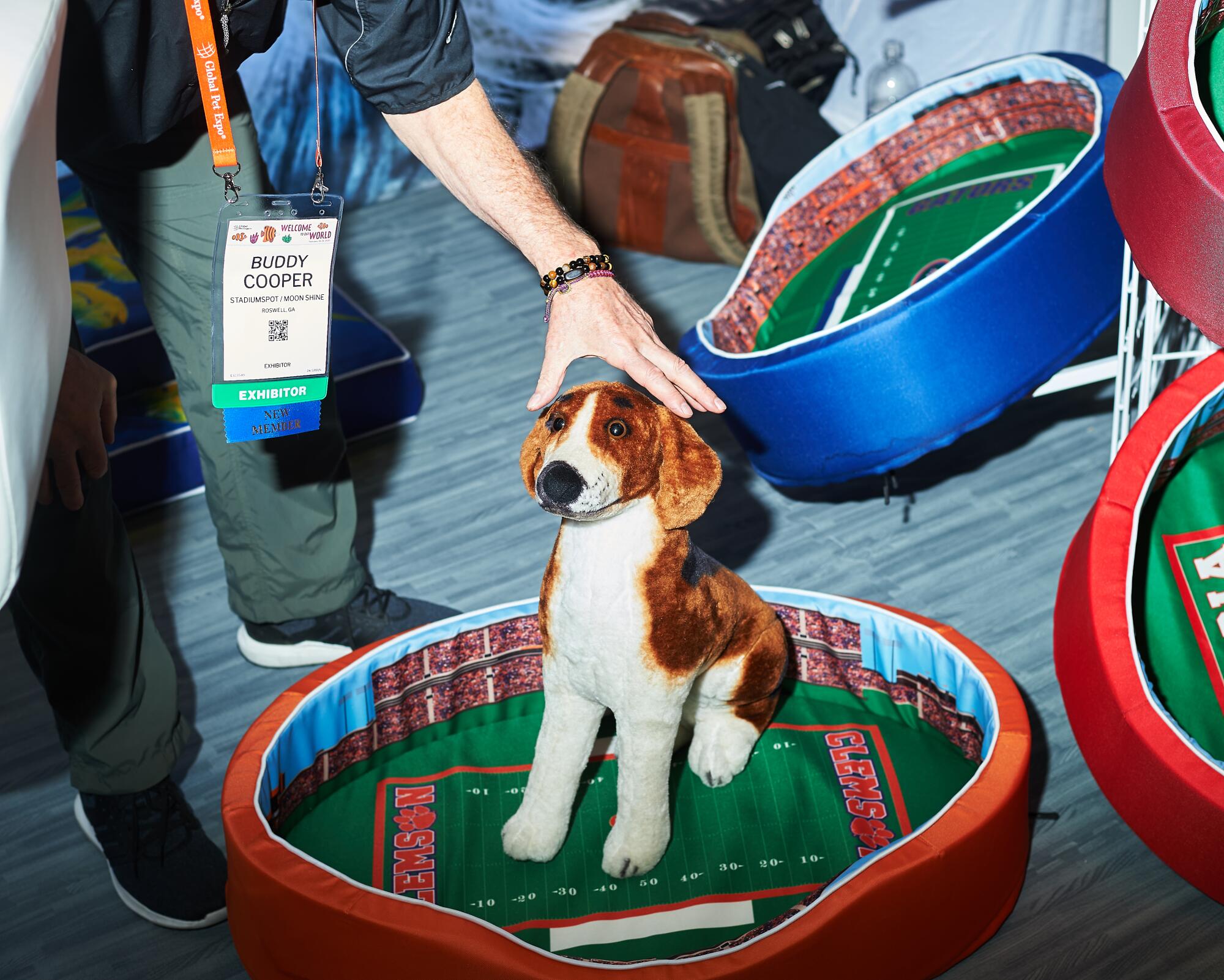
Even the Red Cross and U.S. Navy have joined the bandwagon, licensing pet first-aid kits and aircraft carrier aquarium decor, respectively, to Penn-Plax, the bird piñata maker.
Seemingly everything is fair game.
In 2012, Rubie’s Costume Co. added a handful of animal outfits to its catalog: sombreros (still a top seller), cowboy hats, tiny tuxedos and witch regalia. The concept caught on and soon turned into the firm’s fastest-growing department, ballooning to 500 disguises today. “The crazier the better,” said manager Erin Breig, citing ensembles that resemble avocados, Chucky dolls and llamacorns (half llama, half unicorn). Many of the ideas follow trends in children’s costumes, she notes, “because pets have become surrogate kids.”
PetSmart’s in-house product development team also borrows from human fads. The retail chain’s OMG squeak toy line, for example, was inspired by the popularity of “unboxing” videos, in which someone methodically extracts a tech gadget or other merchandise from its packaging. When the canine eventually rips apart the OMG, a bonus toy awaits inside.
Occasionally, the parroting goes awry. Ethical Products Inc. had to yank a Coke bottle-shaped plaything after the cola company sent a cease-and-desist letter, said spokeswoman Susan Calles. Ethical recently released a set of parody potato chip bag toys (Dogritos instead of Doritos, Kennel instead of Kettle); Calles said, “I haven’t heard of any complaints.”
::
Humanizing pets isn’t a new phenomenon, but it “kicked into high gear about 15 years ago,” said David Lummis, who has been observing the market since 1982 as an analyst for Packaged Facts.
Theories abound on what triggered the shift. Some point to Sept. 11, when folks withdrew for a time, reevaluated priorities and snuggled up at home with family and pets, Lummis said.
Others cite the influence of Disney films — and books like “Charlotte’s Web” — that anthropomorphize animals. “We like to imagine that pets have our consciousness,” said Rex Julian Beaber, a Century City psychologist and attorney.
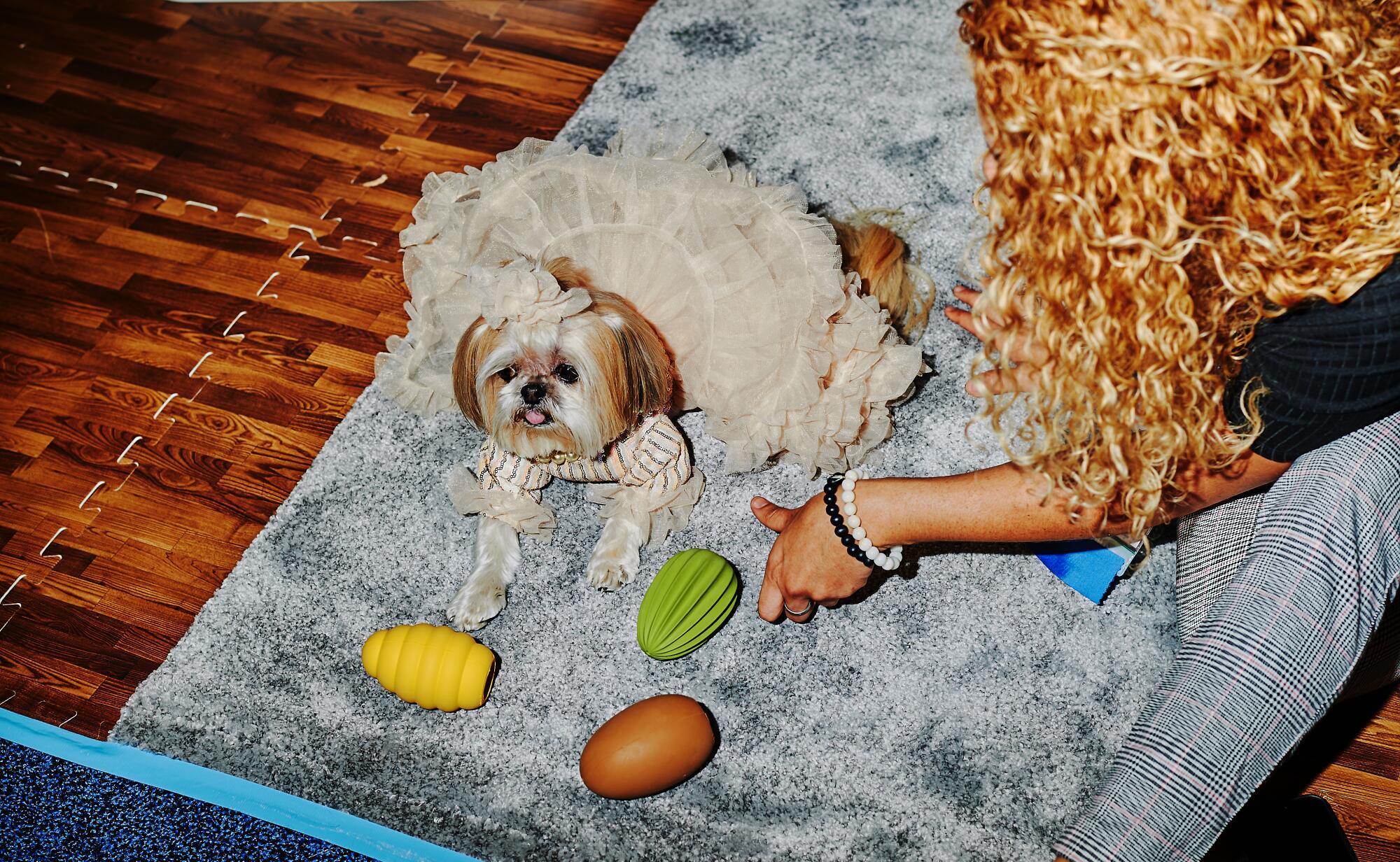
Clever marketing also played a role, according to Don Tomala, whose PR and advertising agency has specialized in pet brands since 1987.
But Beaber sees larger forces at work — an epidemic of loneliness and alienation that began long before people started to shelter in place.
“A humanized pet is the perfect companion,” Beaber said. “They don’t have affairs, they never take sides against you, and their loyalty is unending, as long as you feed them.”
Plus, they’re much cheaper than having kids, said Clive Wynne, an animal behaviorist who founded Arizona State University’s Canine Science Collaboratory and wrote a book titled, “Dog is Love: Why and How Your Dog Loves You.”
Indeed, as more people delay marriage and/or children, the term “pet parent” has replaced “pet owner” in industry circles.
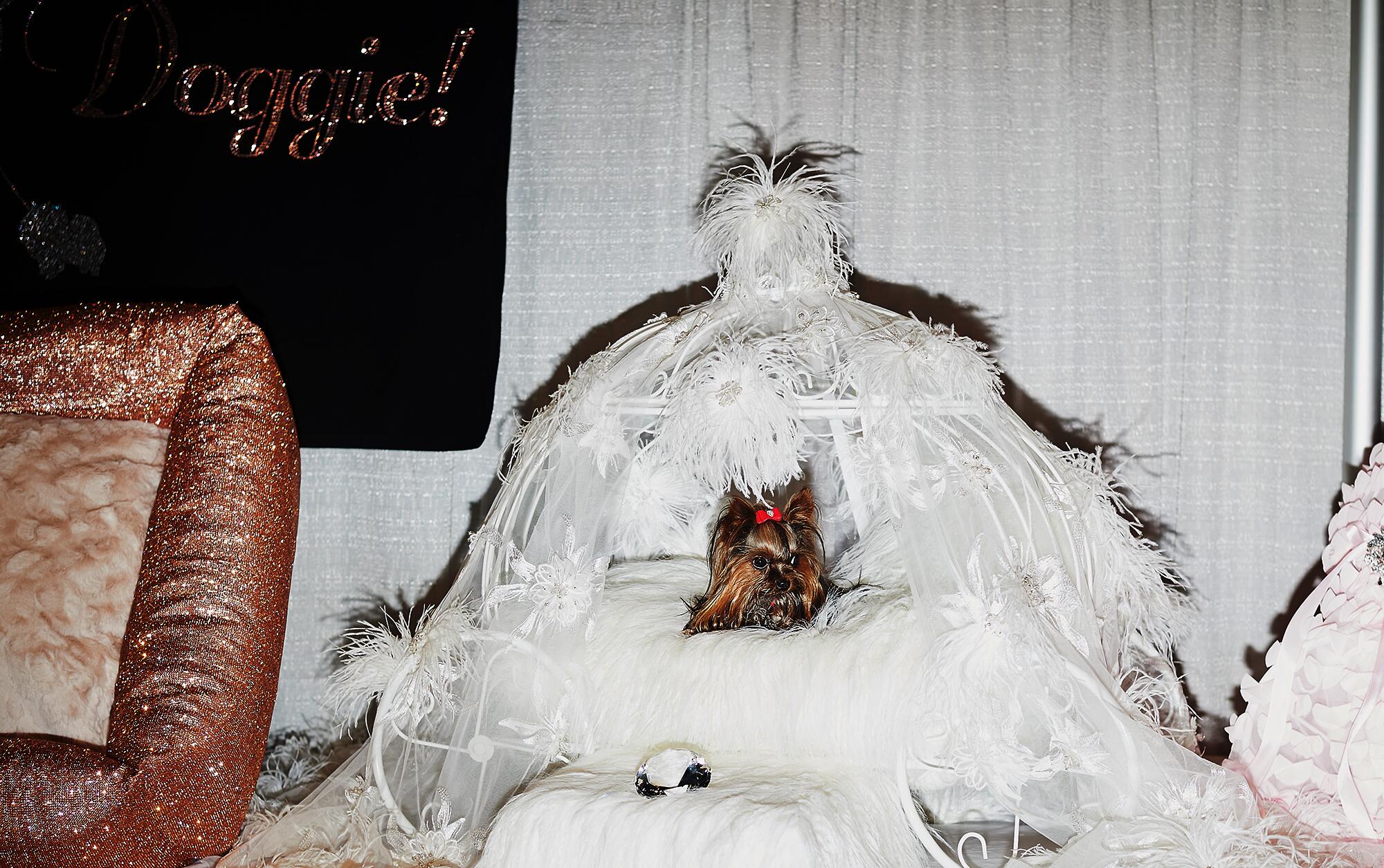
For product inventors, the goal is to somehow tap into that animal-human connection. But success can be elusive.
Dave Ruka — a PetSmart toy buyer who previously scouted fine china and luggage for May Co. and Kohl’s department stores — said he commonly leaves trade shows with just two concepts he likes.
By that standard, entrepreneur Greg Dovidio of North Tustin seemingly hit the jackpot last summer at SuperZoo, a rival trade show in Las Vegas. Buyers from Petco and Chewy.com offered to carry the vibrating dog massage therapy jacket and tangle-free leashes that he and his business partner spent two years developing under their Surf City Pet Works label.
But that’s only half the battle, said Dovidio, a former software consultant who has poured nearly $400,000 into the company, borrowing against his house, draining bank accounts and coaxing a loan from his mom. Although Surf City’s products are now available nationally, “nobody knows who we are,” he sighs. “So we have to do marketing, which will probably cost another $125,000.”
::
Standing out from the crowd in the pet field is tricky. Often, there are multiple companies pitching similar wares.
Ruka said he looks for goods that solve a consumer problem, connect with popular trends (such as sustainability) or are irresistibly cute. One of the few prospects he liked at Global Pet Expo was Spunky Pup’s eco-friendly chew toys, made from recycled plastic bottles. They weren’t the only repurposed plastic playthings to debut at the show, but they were the only ones with packaging that said how many bottles were removed from the environment to make them. “Telling a good story is important,” Ruka said.
He also watches for up-and-coming crazes that PetSmart can duplicate in-house: “If you see every vendor has a unicorn, you better have a unicorn too.”
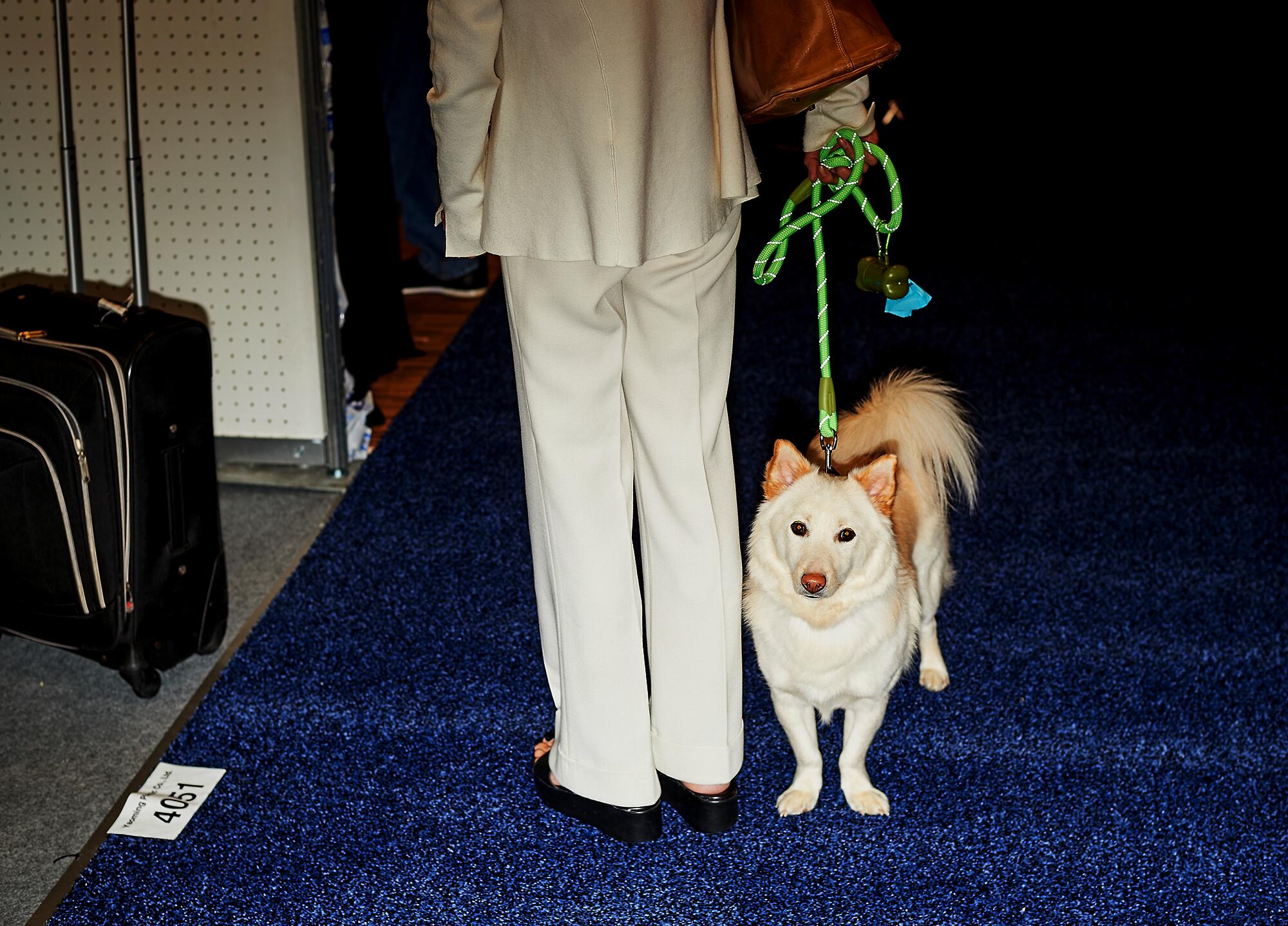
One such theme is camping and trail gear for pets. This month, the chain expects to roll out a collection of animal life jackets, backpacks, water bottles and more.
But PetSmart might have to play catch-up.
At the Expo, Coleman introduced dog-sized tents (bringing new meaning to the term pup tent). And Your Cat Backpack touted an over-the-shoulders carrier with a plastic viewing bubble so kitties can observe passing scenery.
Other outdoors-oriented items included Bike Tow Leash (a metal bar that enables canines to safely trot alongside bicycles and wheelchairs), Doggles (protective eye wear) and Highwave (pet-friendly travel mugs).
An additional option for thirsty pets was MoBowl, a collapsible water dish created by an older South Carolina couple, Laurie and John Hagerman. It took five years to find the right material, said John, 71, referring to a medical-grade silicone so flexible you can crumple it up in one hand.
::
Tech is another rising star in pet land, raking in about $485 million last year, according to Packaged Facts. The latest gadgetry ranged from automatic door openers for chicken coops to ThunderCloud, a combination sound machine and aromatherapy diffuser for dogs that emits Egyptian geranium mist while playing such noises as “crackling fire,” “babbling brook” and “rhythmic trains.”
Are canines really calmer listening to locomotives and smelling flowers? “Well, a lot of it may be more for the pet parent,” said ThunderCloud rep Dave Elek. “Not everyone in our office has a dog, but they all have these machines.”
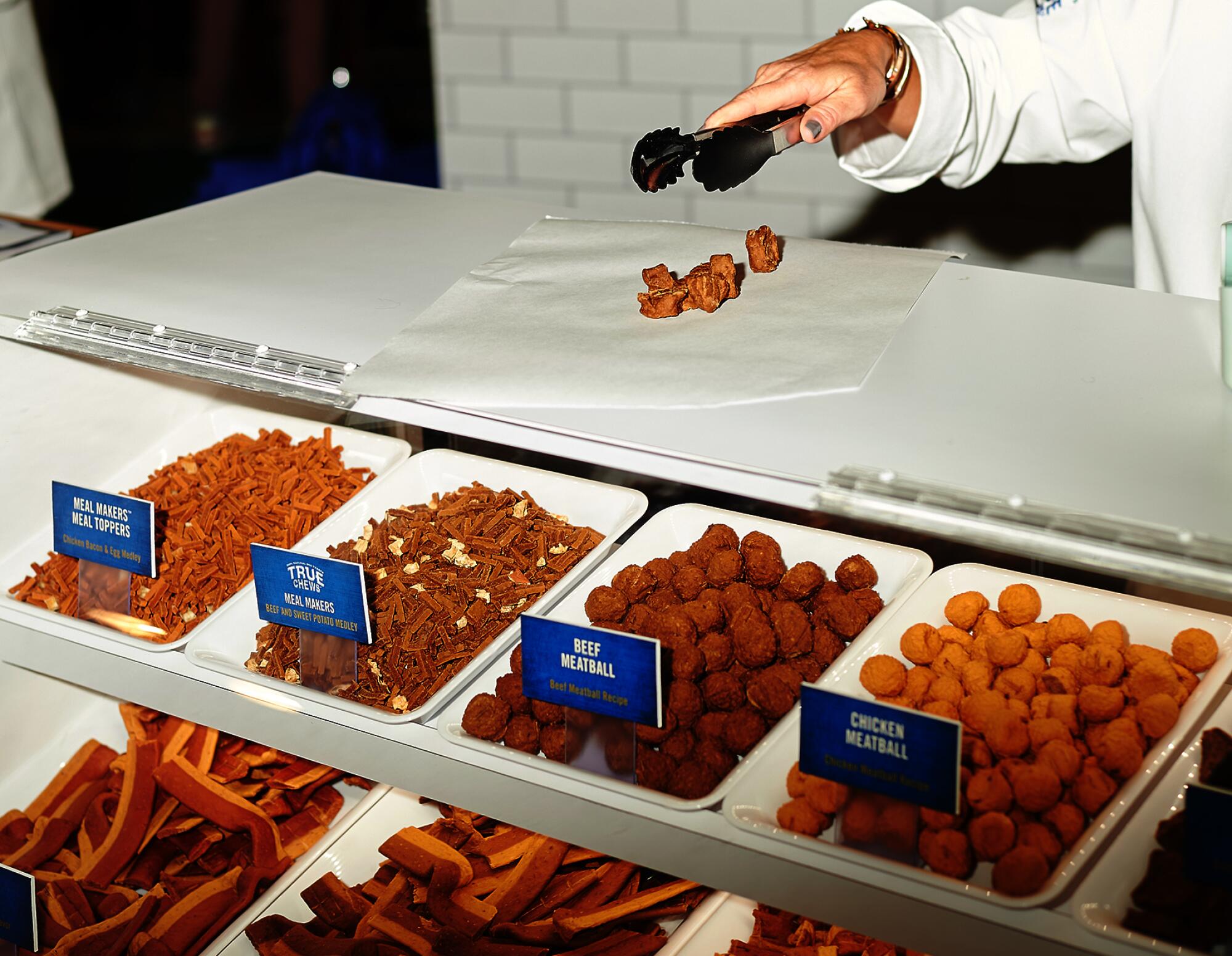
A German company, RelaxoPet, claims to have a more scientific approach to soothing animals. As seen on “Die Höhle der Löwen” (Germany’s version of “Shark Tank”), it uses “subliminal sound waves” to reduce stress in canines, cats, horses, parrots and falcons. Each species has its own device, tailored to the animal group’s hearing range, the company says.
Other foreign-born electronic innovations included Mira-Pet’s ultrasound dog toothbrush (also from Germany); Eyenimal’s GoPro-esque cat collar camera, which films in color and night vision (France); and South Korea’s B612 Cat Planet, which looks like a giant hamster wheel, but is meant for overweight felines and employs LED lights to motivate their chasing instinct.
On the domestic side, Cook’s dog-waste device drew considerable attention, but shortly after the show, he suspended production in favor of manufacturing surgical masks to help combat the coronavirus.
Although pet ownership has flattened in recent years, luxury goods have helped boost the industry’s bottom line, according to Packaged Facts. Even the most basic items have upscale incarnations. At the Expo, the booth for Flexi, the German company that pioneered retractable leashes in 1972, seemed more like a jewelry store, with plush carpeting and glass cases displaying products swathed in Swarovski crystals for $180.
Bedding, one of the most prevalent categories, ranged from Motel 6 to Ritz-Carlton. Most of the choices were generic pads, but Nap Cap, based in Santa Fe Springs, introduced rectangular cushions that resemble a Lakers basketball court, a Kings hockey rink and a Florida Gators football field. Or, for more privacy, pooches could rest inside a jumbo Dodgers baseball cap while chomping on one of the company’s umpire plush toys.
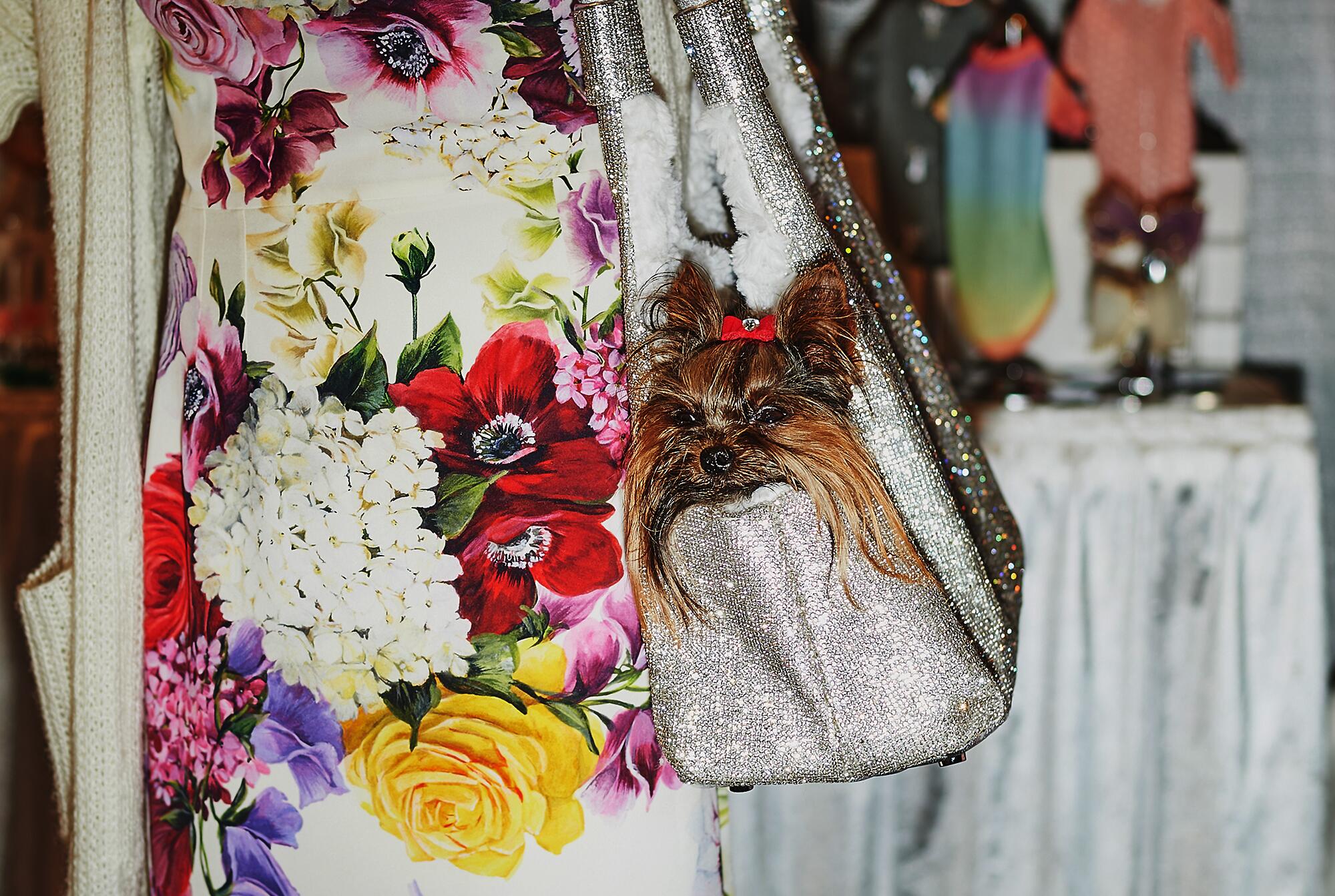
For slumbering felines, Prevue Pet built rhino- and dinosaur-shaped ottomans. And On2Pets cooked up a cat condo shrouded by fake foliage (choose from green or autumn-colored leaves).
But the ultimate pet bed was Hello Doggie’s $1,999 Moulin Rouge Carriage, which caters to canine 1-percenters with faux yak fur pillows and a feather-and-sequin-adorned canopy.
Of course, such extravagance may be underappreciated by the recipient.
“Pets bring us so much pleasure and warm feelings that it feels quite natural to want to reciprocate with gifts,” ASU’s Wynne said. “I’m not telling people not to buy things for their pet … but that isn’t what our animals really want. They don’t need fancy toys and they don’t need fancy food. Those wear off quickly. What they really want is our time. They want us.”
More to Read
Sign up for Essential California
The most important California stories and recommendations in your inbox every morning.
You may occasionally receive promotional content from the Los Angeles Times.


